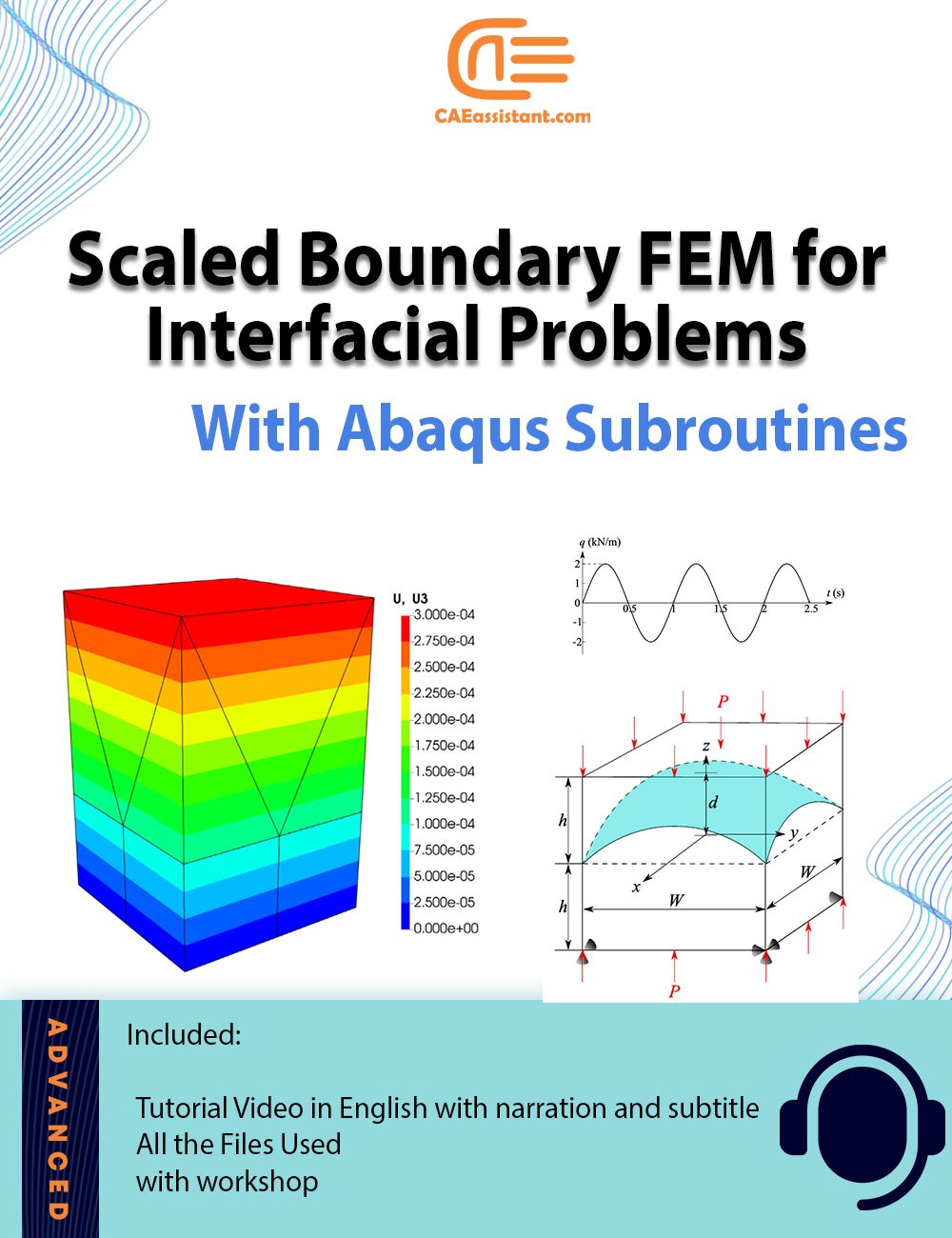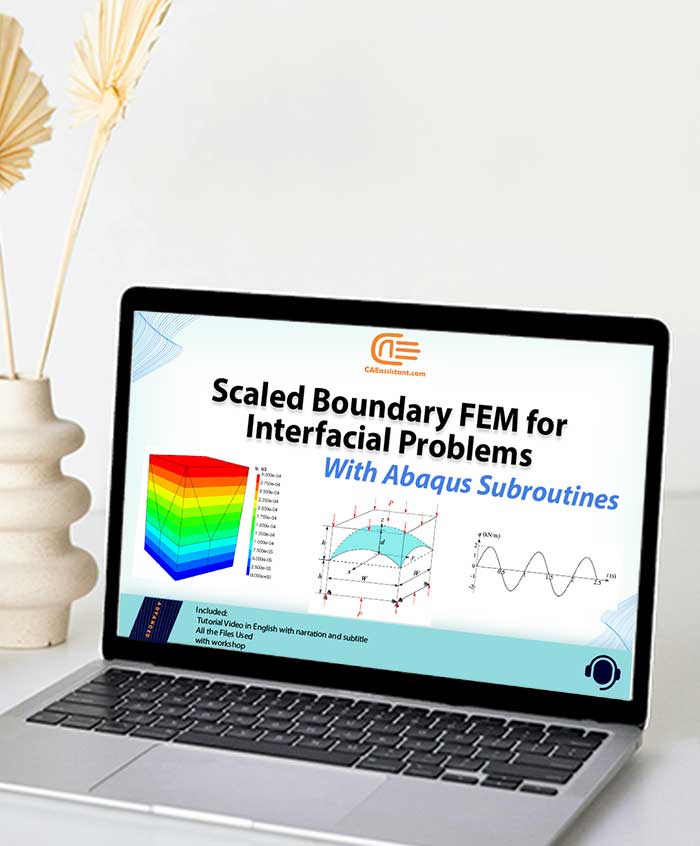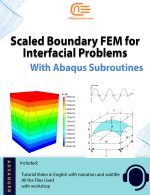Introduction to the Scaled Boundary Finite Element Method (SBFEM)
The Scaled Boundary Finite Element Method (SBFEM) represents a semi-analytical approach. It significantly enhances the capabilities of traditional Finite Element Method (FEM) by offering greater flexibility in mesh generation. SBFEM also provides the ability to handle complex geometries. SBFEM was originally introduced by Wolf and Song. It was designed to address wave propagation in unbounded domains. However, it has since evolved to cover a wide array of applications. These applications include fracture mechanics, contact mechanics, acoustics, and more.
One of the core advantages of Scaled Boundary Finite Element Method is its ability to generate polyhedral elements with arbitrary numbers of surfaces. This feature helps alleviate the meshing burden, a common bottleneck in FEM analysis. By implementing SBFEM into ABAQUS through user elements (UEL), this method has become more accessible to engineers and researchers. It provides a powerful tool for analyzing interfacial problems. SBFEM’s capability to work with polyhedral meshes is particularly beneficial. This integration enhances the effectiveness of FEM analysis in complex scenarios.
Applications and Importance
Scaled Boundary Finite Element Method is versatile and finds application across various fields:
Fracture Mechanics: SBFEM is highly effective in dealing with stress singularities, which are challenging to handle using standard FEM.
Wave Propagation: SBFEM’s ability to model unbounded and bounded domains makes it ideal for simulating wave propagation in different media.
Complex Geometry Handling: The method’s capacity to generate polyhedral elements allows it to handle intricate geometries with ease. This capability is especially useful in fields like biomechanics. It is particularly beneficial for analyzing structures such as human bones or micro-structured materials.
Interfacial Problems: SBFEM excels in addressing non-matching interfaces in multi-domain problems, such as those found in contact mechanics and acoustic-structure interactions.
The importance of Scaled Boundary Finite Element Method lies in its ability to reduce computational time. It also improves accuracy in simulations involving complex geometries and interface interactions. By using SBFEM, the meshing process becomes less labor-intensive. The accuracy of the simulation results is enhanced. This is especially true in scenarios where traditional FEM might struggle. SBFEM offers a significant advantage in such cases.
Challenges in Analysis
While Scaled Boundary Finite Element Method offers numerous advantages, there are challenges associated with its application:
Implementation Complexity: Integrating SBFEM into commercial software like ABAQUS requires custom programming. It also demands a deep understanding of both the software and the method.
Handling of Nonlinearities: Although SBFEM is powerful in linear problems, extending its application to nonlinear problems adds complexity to the implementation and analysis.
Despite these challenges, the benefits of using SBFEM, particularly in terms of flexibility and accuracy, make it a valuable tool for engineers and researchers dealing with complex simulations.
Benefits of Using ABAQUS with the Scaled Boundary Finite Element Method (SBFEM)
Advanced Contact Modeling: ABAQUS excels in handling complex contact interactions, crucial for SBFEM applications involving curved or non-matching interfaces.
Seamless Integration with SBFEM: ABAQUS supports custom user elements (UEL), allowing easy incorporation of SBFEM for polyhedral mesh generation and complex geometry handling.
Powerful Nonlinear Solvers: ABAQUS’ robust nonlinear solution techniques enhance the accuracy of SBFEM in challenging engineering problems involving large deformations and material nonlinearity.
Efficient Performance: ABAQUS is optimized for stability and efficiency in large-scale simulations, making it ideal for the computational demands of SBFEM.
Versatile Element Library: The extensive element library in ABAQUS supports hybrid modeling, combining SBFEM with traditional FEM elements for enhanced capabilities.
Open-Source Flexibility: The open-source SBFEM implementation in ABAQUS allows for customization and extension, offering flexibility not always available in other FEA software.
Strong Support Network: ABAQUS offers comprehensive documentation and community support, aiding in the successful implementation of SBFEM.
Advanced Visualization: ABAQUS provides powerful tools for visualizing Scaled Boundary Finite Element Method results, crucial for interpreting complex simulations.





Reviews
Clear filtersThere are no reviews yet.